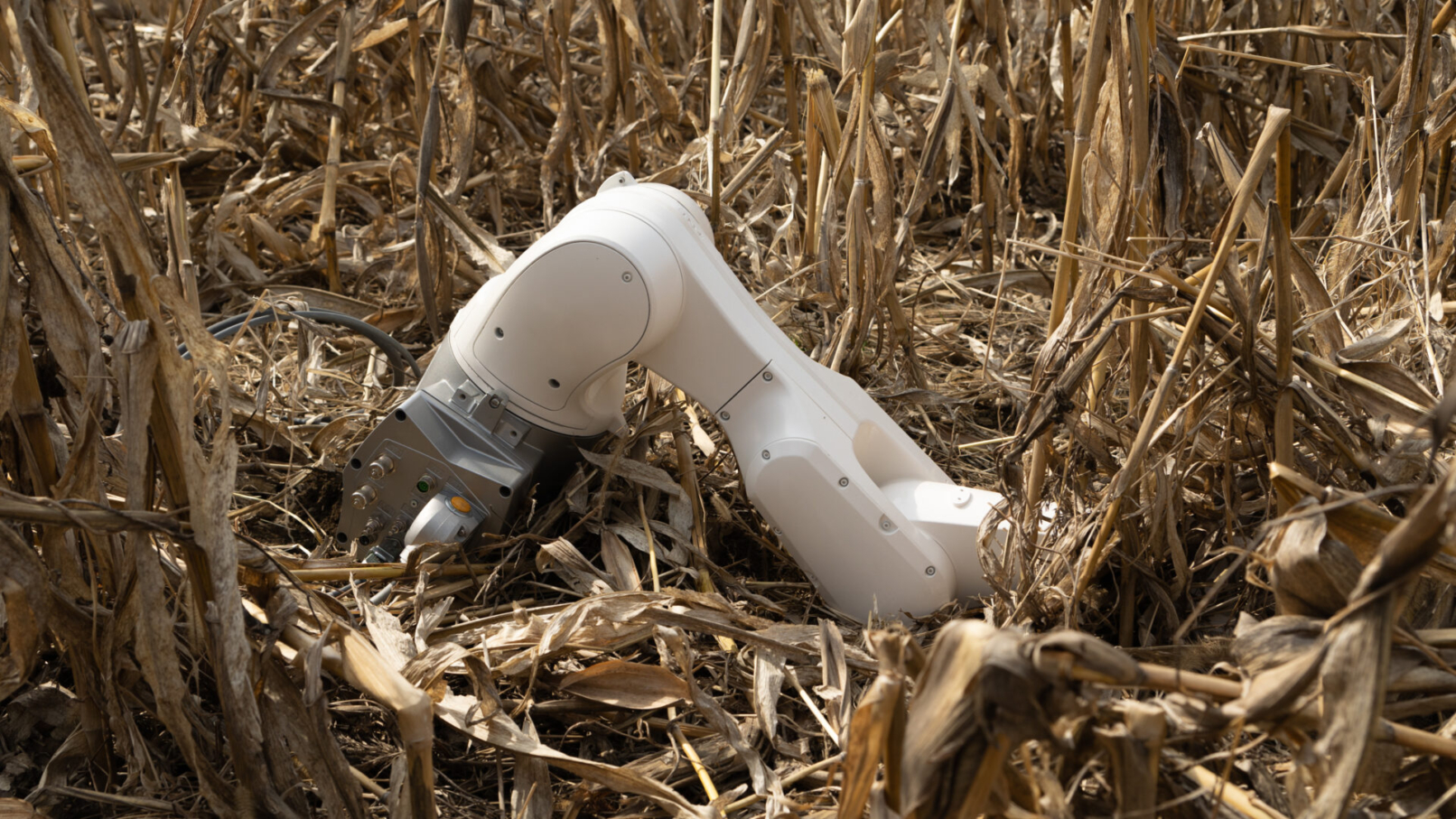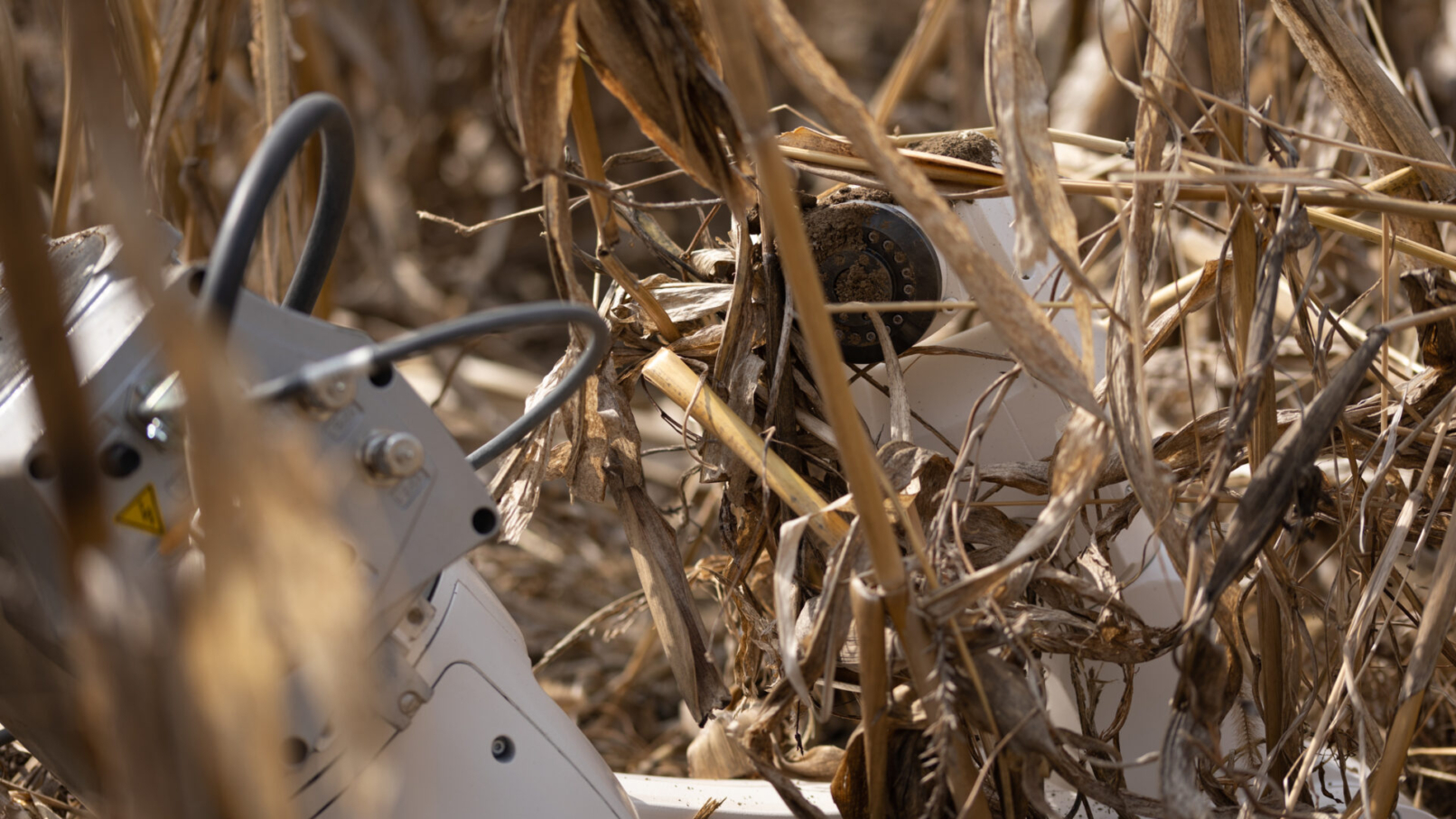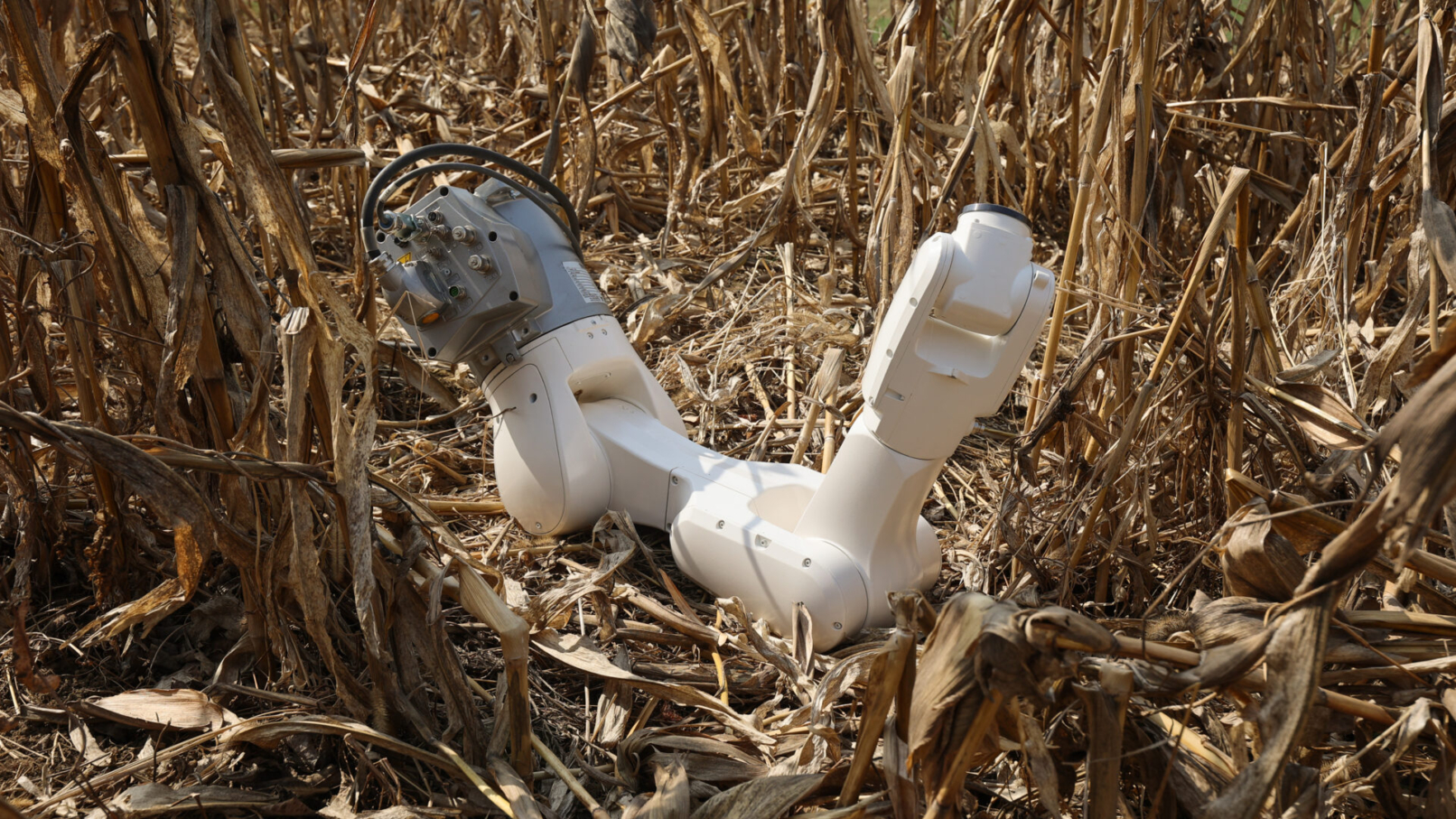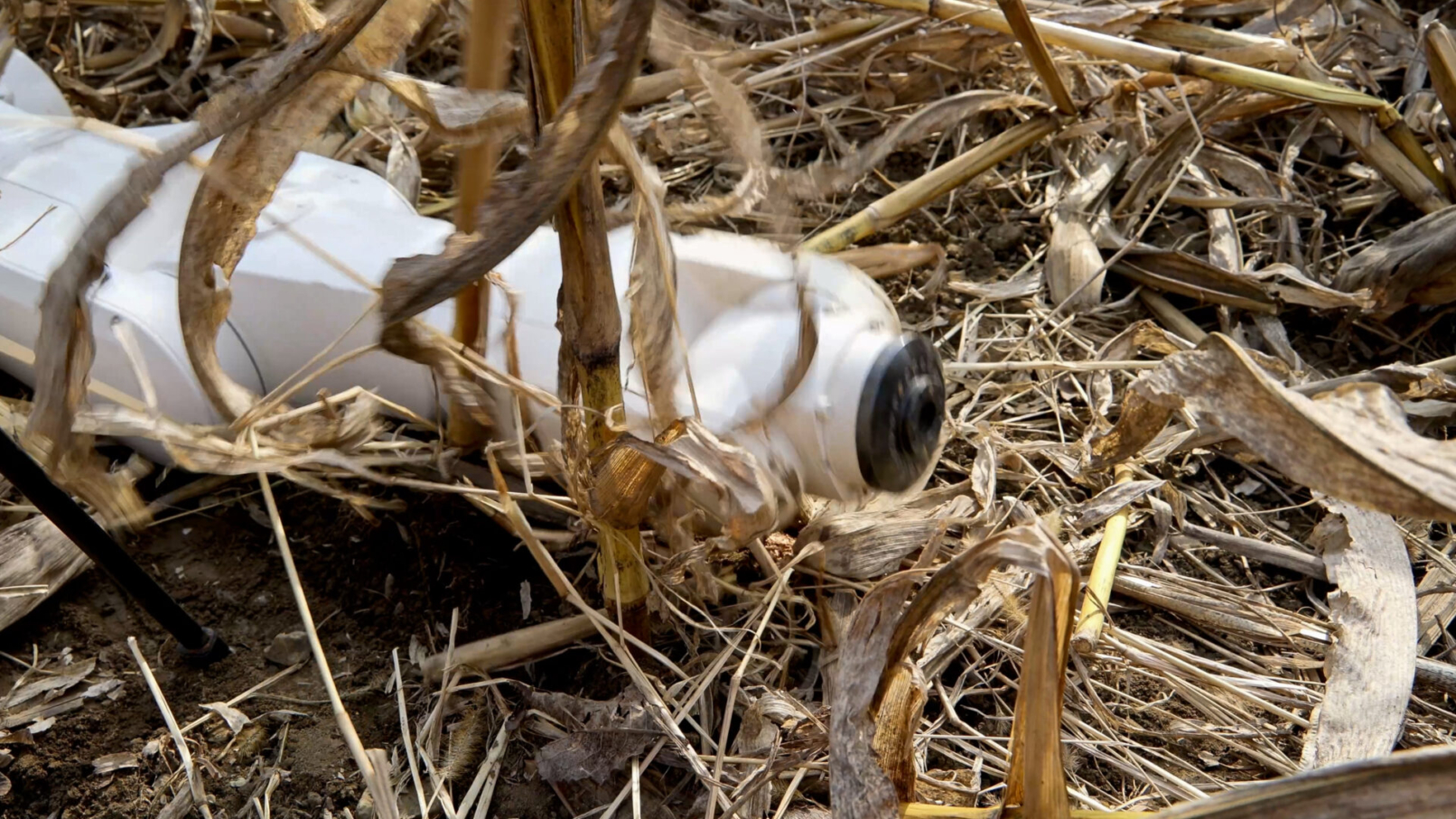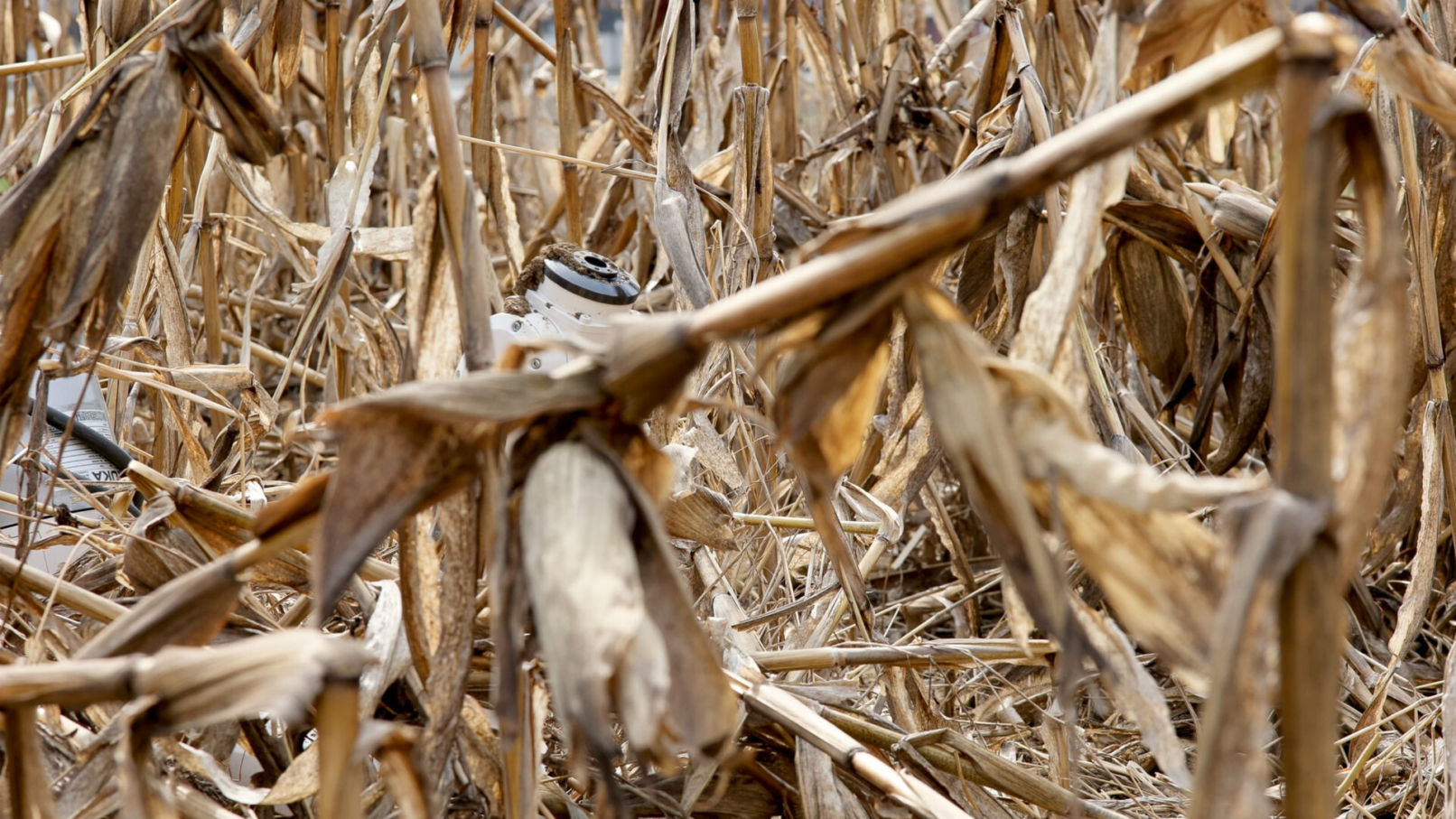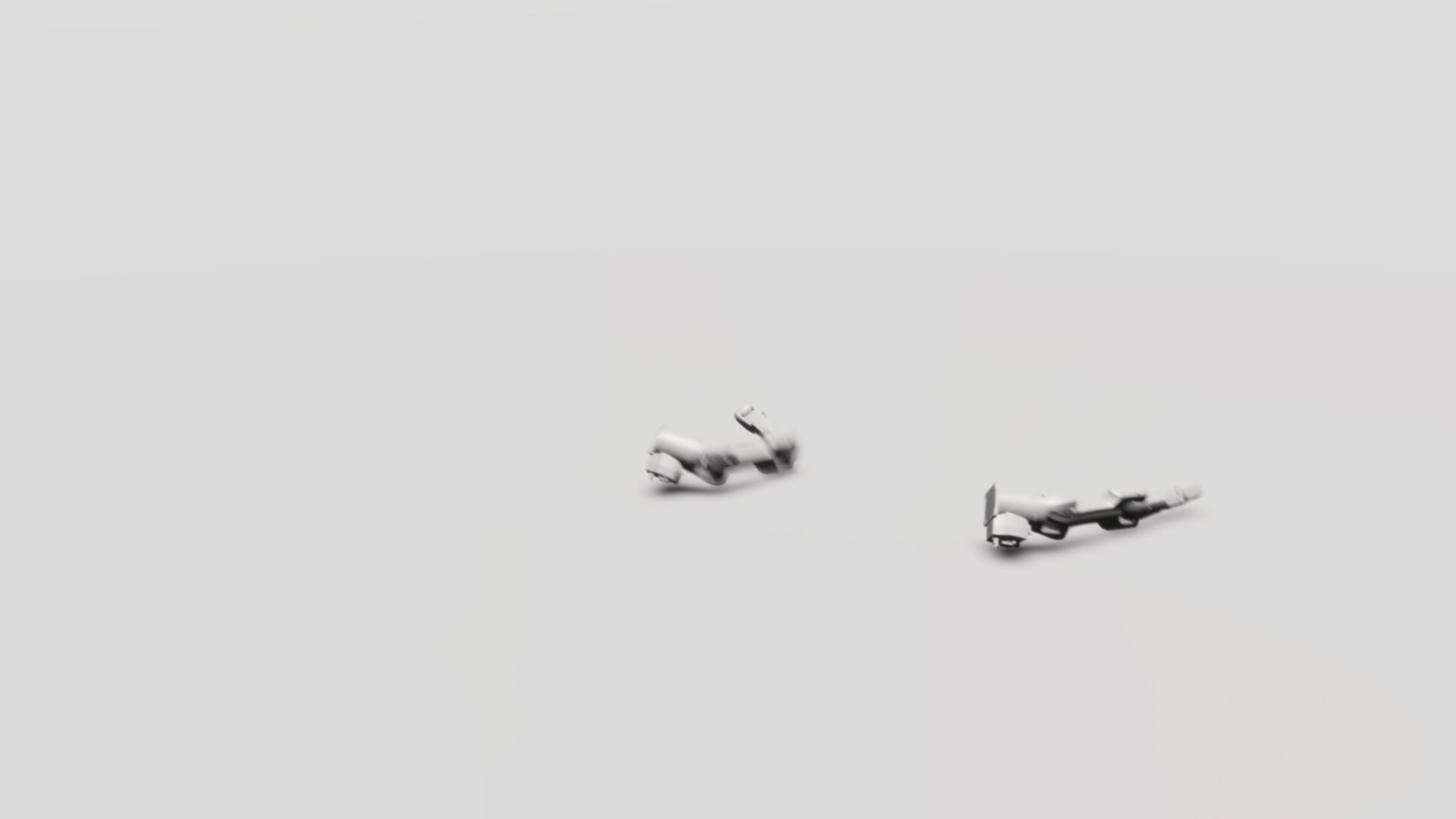disarming is a performative exploration of the relation between detached robot arms, artificial environments, and human observers. A learning and unlearning of locomotions in postanthropocentric environments and times. The work playfully explores the ambiguity of disarming as a process of physical detachment and emotional attachment.
Locomotion can be seen as a primal (post-birth) instinct and ultimate act of independence. A robotic limb, somehow detached from a human-constructed technological body, tries to find concepts for advancing movements even though it initially wasn’t made for locomotion – vulnerable yet determined. Parallel to a familiar dystopian plot of technological autonomy and the feelings going with it, witnessing these first clumsy tries may awaken compassion or even a certain emotional bond.
disarming paints a picture of a multi-layered narrative of technology as a convoluted species in an ecological system of intertwined digital and physical realms with parallel learning/unlearning on different levels. A relational world with and between independence and still connectedness.
The work is encounterable in two variations:
- Intra-active Installation (with an AI-driven robotic arm durationally learning)
- Intra-active Video Installation (with an AI continuously re-narrating the video cut)
Exhibited as video installation disarming fuses physical acting with digital observation and vice versa. The same Reinforcement Learning (RL) algorithm learning physical locomotions with the robotic body in the video footage now observes how likely recent social media postings mention “robot” and “arm” in the same post. In reference to this observation, the RL algorithm is set to continuously learn and unlearn how to edit the video scenes to decrease this human tendency.
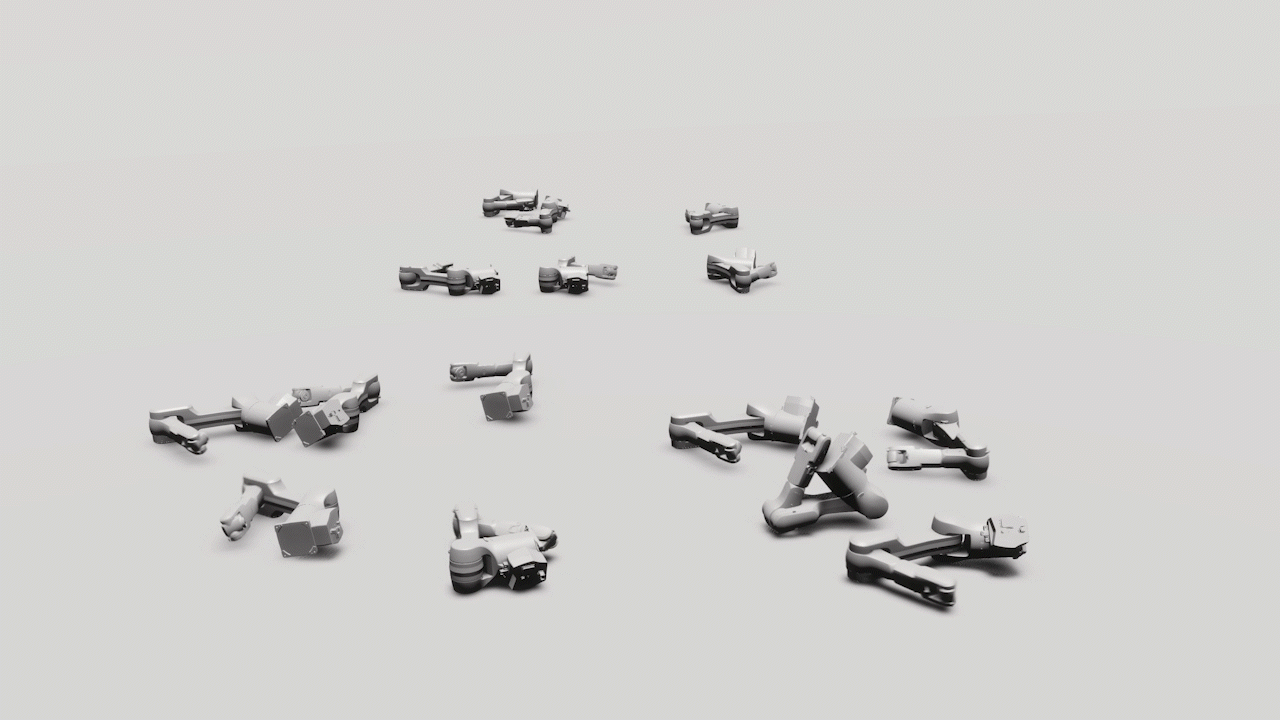
Core Team
Emanuel Gollob – research, concept & production
Magdalena May – camera & text
Advice and support
Silvia, Johann & Friederike Gollob – farming & fieldwork support
Amir Bastan – real-time robot control
Creative Robotics – robotic hardware support
Ben May – exhibition production at BC Gallery Basel
Hardware | KUKA industrial robot arm | Mini PC | fallow cornfield
Software | Reinforcement Learning | vvvv gamma | bunraku.xyz | Robot Sensor Interface
Acknowledgments | Supported by BC Gallery Basel | This work was realised in part within the framework from the European Media Art Platform residency program at WRO Art Center with support of the Creative Europe Culture Programme of the European Union.
References excerpt
Barad, Karen. Meeting the Universe Halfway: Quantum Physics and the Entanglement of Matter and Meaning. Duke University Press Books; Second Printing edition (July 1, 2007)
Barad, Karen. TransMaterialities – Trans*/Matter/Realities and Queer Political Imaginings. GLQ: A Journal of Lesbian and Gay Studies. Duke University Press (2015)
Crawford, Kate. Atlas of AI: Power, Politics, and the Planetary Costs of Artificial Intelligence. Yale University Press (April 6, 2021)
Penny, Simon. Making Sense: Cognition, Computing, Art, and Embodiment. The MIT Press (2017)
Riskin, Jessica. Genesis Redux: Essays in the History and Philosophy of Artificial Life. University of Chicago Press (2007)
